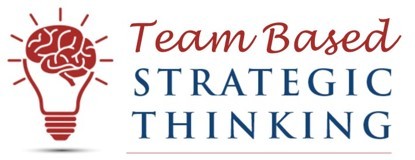Your People Need The Opportunity To Learn How To Think (#10 Article)
Most, if not all, large organisations have a sophisticated recruitment process. There will typically be a number of behavioural based interviews combined with a barrage of psychometric profiling tests designed to ensure a rigorous (and to the recruitee) at times arduous path into the business. This system is employed at all levels of the business, from shop floor workers to the top floor workers.
The point is that you have recruited well-qualified, self-disciplined, smart people. However, the problem with this is that you then literally institutionalise them. They will be indoctrinated with the policies, procedures, conventional wisdom and above all culture of the organisation. In the terms of Michael Vaughan in his book The Thinking Effect, you have already started the process of telling them “what to think” not teaching them “how to think.”
If the underlying culture of the organisation is to maintain the status quo – which it invariably is – then your organisation’s future will be condemned to the long list of business models that have been fatally disrupted. From encyclopedias to taxis, printed newspapers, music acquisition, cable TV and now, the finance sector – these are all Industries that have had their traditional business models turned on their heads.
Collins and Porras in Built to Last (Random House 1994) introduced the concept of “preserving the core whilst stimulating progress” being a key differentiating factor in the habits of successful visionary companies. However, while their research identifies companies that exhibited this habit, they did not attempt to explain how this habit came about.
Similarly in Collins’ follow up work Good to Great (Random House 2004) his research team, in analysing the great companies, came to the paradoxical conclusion that “good to great” companies paid scant attention to managing change, motivating people, or creating alignment. Under the right conditions, the problems of commitment, alignment and motivation and change “largely melt away.” They had no formal tag line or name for their “transformation” and in fact some companies didn’t realise until after the event how large the magnitude of the transformation was.
Collins and his research team identified that the transformation happened in three broad stages: disciplined people, disciplined thought, and disciplined action. My proposition is that you have hired people who have the requisite amount of self-discipline. However, what I have noticed is that across most if not all organisations there is not a habit of disciplined thinking, and without disciplined thinking there can be no disciplined action. This may be why there are so few truly great companies.
Collins and team identify the key attributes of disciplined thinking. The ability to confront the brutal facts, which means that you need to actively challenge the status quo and conventional wisdom whilst answering these three questions:
- What are you deeply passionate about
- What can you be best in the world at
- What drives your economic engine
He called this the “Hedgehog Concept.”
These are deep philosophical questions that the business needs to answer, however most businesses have not created the underlying thinking systems, processes, and structures to allow this to happen. Collins does note that it typically takes four years to translate this thinking into a simple crystalline concept: The Hedgehog Concept. The big question then is does your organisation have four years to do this? If your world is VUCA, then the answer is no. You need to be working on the underlying systems, structures, and processes that allow this to happen organically.
Your role as the strategic leader is to prepare the business for the challenges of the future by working on:
- New and improved systems, structures, and processes (execution competencies)
- Challenging and promoting alternate business models
- Creating alignment in application between the business model and the organisation’s competencies.
This is based on the premise that no business can rely on their current level of skills and knowledge, current business model, or leave creation of alignment to chance to allow them to compete effectively in the future.

